In a world where safeguarding begins with everyday interactions, teaching consent to toddlers and preschoolers isn’t just possible—it’s essential. Long before children understand the word “consent,” they can learn what it feels like to be respected, heard, and safe. These early lessons lay the foundation for lifelong boundaries, empathy, and self-worth.
What Is Consent in Early Childhood?
Consent means giving permission freely, without pressure. For young children, it’s about:
- Understanding that their body belongs to them
- Learning they can say “no” and be heard
- Respecting others’ boundaries, too
This isn’t about adult concepts—it’s about everyday choices, like whether they want a hug, who helps them with toileting, or how they say goodbye.
Why It Matters
Teaching consent early:
- Builds emotional literacy and self-advocacy
- Reduces risk of grooming and abuse
- Supports respectful peer interactions
- Empowers children to speak up when something feels wrong
In trauma-informed practice, consent is a protective factor. It helps children recognize discomfort and trust their instincts.
Practical Strategies for Educators and Families
1. Model Consent Daily
- Ask before hugging, tickling, or picking up a child: “Can I give you a hug?”
- Narrate care routines: “I’m going to wipe your nose now. Is that okay?”
2. Offer Choices
- “Would you like to hold my hand or walk beside me?”
- “Do you want to say goodbye with a wave or a high five?”
3. Respect ‘No’
- If a child says “no” to a hug, honor it—even if it’s a beloved relative.
- Avoid coercive language like “Don’t be rude” or “Just give a kiss.”
4. Teach Body Language and Feelings
- Use visuals to show “comfortable” vs. “uncomfortable” touch
- Practice saying “Stop” or “I don’t like that” in play
5. Use Books and Songs
- No Means No! by Jayneen Sanders
- Don’t Hug Doug by Carrie Finison
- Simple songs like “My Body’s Mine” reinforce autonomy
6. Embed in Group Time
- Role-play greetings: “Would you like a handshake or a wave?”
- Use puppets to explore boundary-setting and peer respect
Consent Beyond Touch
Help children understand consent applies to:
- Sharing toys
- Playing games
- Keeping secrets
- Taking photos
- Saying “no” to peer pressure
Teach that consent is ongoing, reversible, and must be freely given.
Trauma-Informed Tips
- Avoid forced affection, even in cultural contexts—offer alternatives
- Validate discomfort: “You don’t have to if it doesn’t feel right”
- Build a “Safety Network” of trusted adults children can talk to
Micro-Moment Consent Strategies
1. “Pause and Ask” Rituals
Embed short pauses before physical interactions:
- “I’m going to help you with your shoes—okay?”
- “Would you like help or want to try yourself?”
2. Visual Consent Cues
- Use cards or posters with “Yes,” “No,” “Not Yet,” and “Ask Me” faces.
- Children can point or hold up a card to express comfort levels.
3. Consent Zones in Play Spaces
- Designate areas with signage like “Quiet Zone,” “Hug-Free Zone,” or “Ask First Zone” to normalize boundary-setting.
Role-Play & Storytelling
4. Puppet Scenarios
- Use puppets to act out boundary-crossing moments and model respectful responses.
E.g., “Benny Bear wants a hug. What should he do first?”
5. “Choose Your Ending” Stories
- Create interactive tales where children decide how a character responds to a boundary being crossed.
Creative Expression
6. Consent Collage
- Children cut and paste images of things they like and don’t like (e.g., hugs, loud noises, sharing toys).
- Use this to discuss preferences and respecting others’ likes/dislikes.
7. Emotion Mapping
- Draw body outlines and color where they feel “happy,” “nervous,” or “angry” when someone gets too close.
- Helps children identify and express discomfort.
Regulation & Empathy Building
8. “Stop, Think, Ask” Games
Before touching or joining play, children practice stopping, thinking, and asking:
- “Can I play with you?”
- “Is it okay if I sit here?”
9. Mirror Feelings
- Use mirrors to help children recognize facial expressions and match them to emotions—building empathy and awareness of others’ comfort.
Documentation & Reflection
10. Consent Moments Journal
- Educators jot down micro-moments where children assert boundaries or show empathy.
- Use these for group reflection or parent communication.
11. “I Said No” Wall
- Celebrate moments when children confidently said “no” and were respected.
- Helps normalize boundary-setting as a strength.
Puppet Consent Scenarios
Purpose: Normalize asking permission and respecting “no”
How to Play:
- Use puppets to act out scenarios (e.g., one puppet wants a hug, the other says “no”)
- Children help puppets navigate respectful responses
- Rotate roles so children practice both asking and responding
“My Body, My Rules” Circle Game
Purpose: Reinforce body autonomy and choice
How to Play:
- Children sit in a circle and choose how they want to say hello (wave, high-five, smile)
- Others must ask first and respect the chosen greeting
- Reflect on how it feels to choose and be respectedConsent Snack Time
Purpose: Practice verbal and non-verbal consent cues
How to Play:
- Before sharing snacks, children must ask: “Would you like some?”
- Use visual cards (Yes/No/Not Yet) for children to respond
- Discuss how we feel when someone listens to our answer
Consent Collage
Purpose: Explore preferences and boundaries through art
How to Play:
- Children cut out or draw things they like/don’t like (e.g., hugs, loud noises)
- Create a collage titled “Things I Like / Things I Don’t Like”
- Use it to spark conversations about respecting differences
“Stop, Go, Ask” Movement Game
Purpose: Teach physical boundaries and checking in
How to Play:
- Children pair up and take turns initiating movement (e.g., dancing, jumping)
- Partner must say “Go” to begin, “Stop” to pause, or “Ask” if unsure
- Builds awareness of mutual agreement and body language
Consent Bingo
Purpose: Reinforce consent concepts in a playful way
How to Play:
- Create bingo cards with phrases like “I asked first,” “I said no,” “I changed my mind,” “I respected a friend’s no”
- Children mark off when they experience or witness these moments
- Celebrate with a group reflection
Linking To The EYLF
Linking consent education to the Early Years Learning Framework (EYLF) is not only possible—it’s foundational. Consent aligns deeply with the EYLF’s vision of Belonging, Being and Becoming, and supports multiple learning outcomes that promote autonomy, well-being, and respectful relationships.
EYLF Learning Outcomes & Consent Connections
| EYLF Outcome | Consent Link | Examples in Practice |
|---|---|---|
| 1.1 Children feel safe, secure, and supported | Respecting children’s “no” builds trust and emotional safety | Asking before physical contact; honoring refusals |
| 1.2 Children develop autonomy, resilience, and agency | Consent empowers children to make choices about their bodies | Offering choices in greetings, care routines, and play |
| 2.1 Children develop belonging and community understanding | Consent teaches reciprocal rights and responsibilities | Role-playing respectful interactions and boundaries |
| 3.1 Children become strong in social and emotional well-being. | Consent supports emotional literacy and self-regulation | Using visuals to express comfort/discomfort; naming feelings |
| 5.1 Children interact verbally and non-verbally for a range of purposes | Consent involves clear communication and listening | Practicing “Can I…?” and “No thank you” in group games |
Principles & Practices That Support Consent
-
Secure, respectful and reciprocal relationships
→ Consent is built on mutual respect and trust -
Holistic approaches
→ Consent supports emotional, physical, and social development -
Learning through play
→ Role-play and games help children explore boundaries safely -
Intentional teaching
→ Educators model and scaffold consent language and behavior -
Cultural competence
→ Consent practices must respect diverse norms around touch and communication
Documentation Tips
- Use EYLF outcome numbers (e.g., 1.2, 3.1) in observations of consent moments
- Capture quotes like “I said no and they listened!” to show agency
- Reflect on how consent practices support well-being and identity
- Include family input on cultural preferences around boundaries
Further Reading
Simple Songs About Consent For Children
Child Protection Activities For Preschoolers
My Body Safety Rules Posters
My Early Warning Signs Posters
Lulu Says Yes, Lulu Says No - Free Children's Story On Teaching Consent in Early Childhood





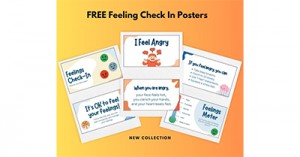

 Open ended questions cannot be responded to with one word answers such as yes or no. These types of questions enables a child to provide
Open ended questions cannot be responded to with one word answers such as yes or no. These types of questions enables a child to provide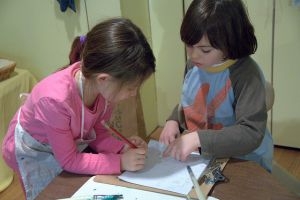 During your child’s preschool years, an important milestone begins to emerge. This is the development of pre-writing skills. Pre-writing skills are used to encourage, develop
During your child’s preschool years, an important milestone begins to emerge. This is the development of pre-writing skills. Pre-writing skills are used to encourage, develop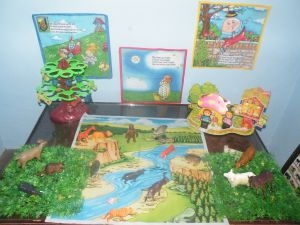 Open ended materials enables children to play freely. They are objects that have no rules to follow, use or function. Raw materials that can be
Open ended materials enables children to play freely. They are objects that have no rules to follow, use or function. Raw materials that can be An Acknowledgment of the Country is a way of showing respect for the Traditional Owners and can be given by both non-Indigenous people and Aboriginal
An Acknowledgment of the Country is a way of showing respect for the Traditional Owners and can be given by both non-Indigenous people and Aboriginal Language plays an important role in a child’s development. It enables a child to communicate effectively with their family, learn at school, socialize with friends,
Language plays an important role in a child’s development. It enables a child to communicate effectively with their family, learn at school, socialize with friends,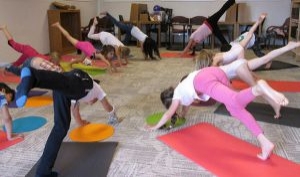 Like adults, children have to deal with their own stress in life. Moving house, starting a new school, preparing for a new sibling - these are
Like adults, children have to deal with their own stress in life. Moving house, starting a new school, preparing for a new sibling - these are Playdough is such a versatile material. It provides numerous benefits to children as they manipulate it, it is safe and soothing and provides children with
Playdough is such a versatile material. It provides numerous benefits to children as they manipulate it, it is safe and soothing and provides children with Teaching children about sustainability enables them to appreciate and respect the natural environment. Early childhood services can provide meaningful hand on learning experiences in order
Teaching children about sustainability enables them to appreciate and respect the natural environment. Early childhood services can provide meaningful hand on learning experiences in order Recycling is an important concept that teaches children to care for the environment. It encourages children to be responsible and show a growing appreciating for
Recycling is an important concept that teaches children to care for the environment. It encourages children to be responsible and show a growing appreciating for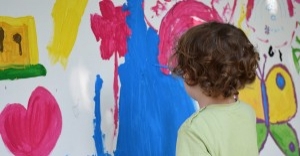 When children apply paint to paper, glue things together, or pound a lump of clay, they experiment with colour, shape design and texture.
When children apply paint to paper, glue things together, or pound a lump of clay, they experiment with colour, shape design and texture.



